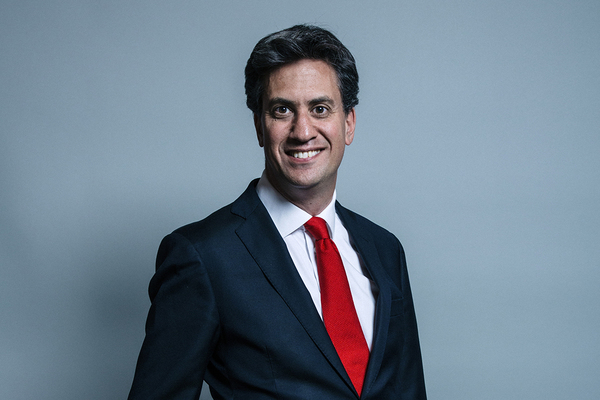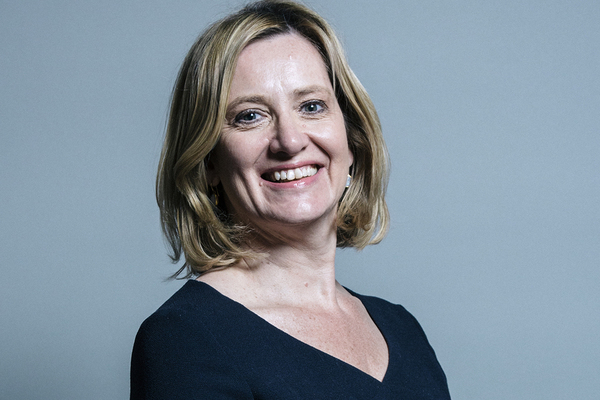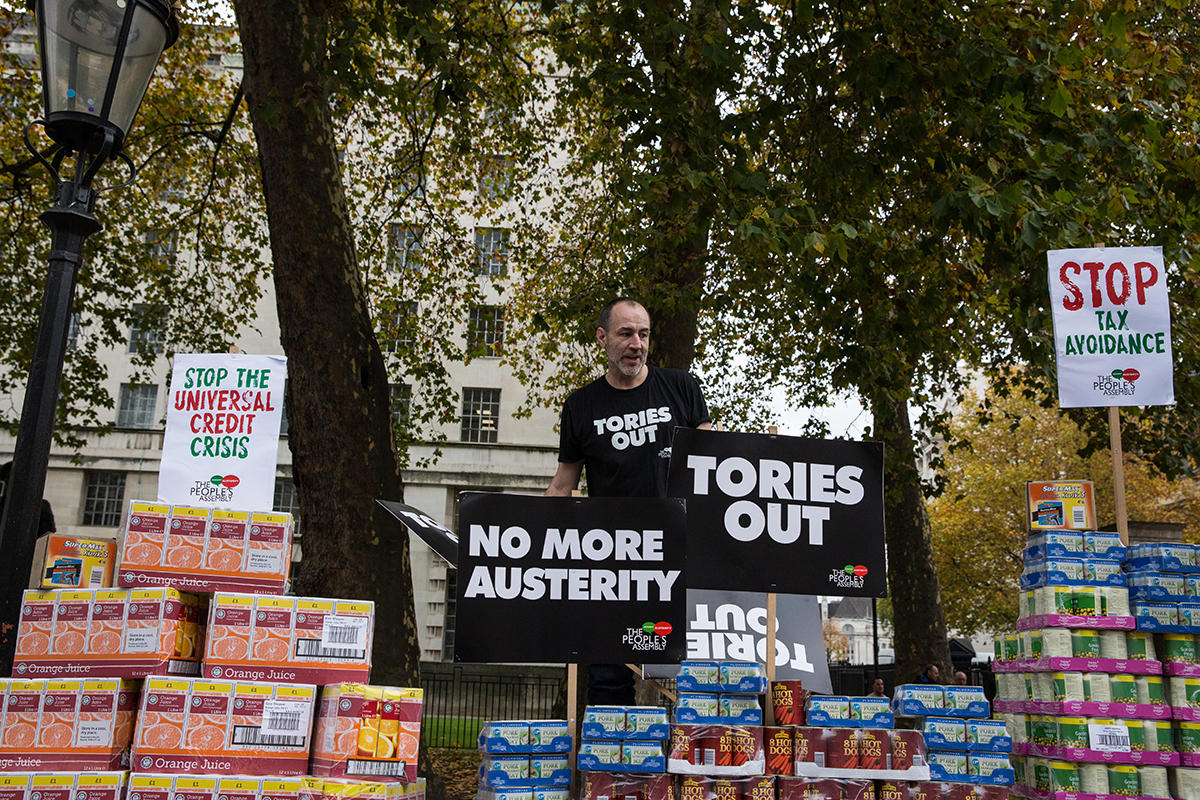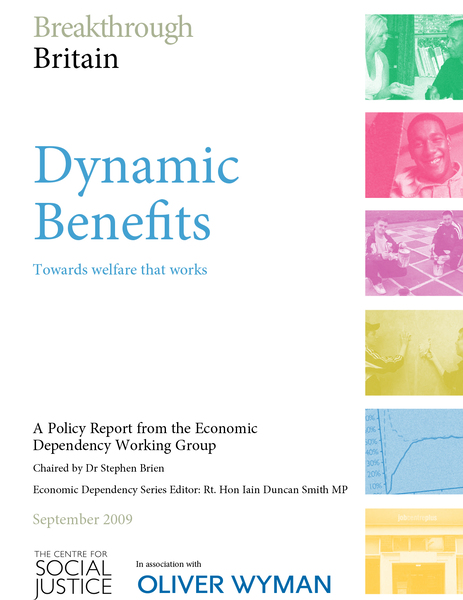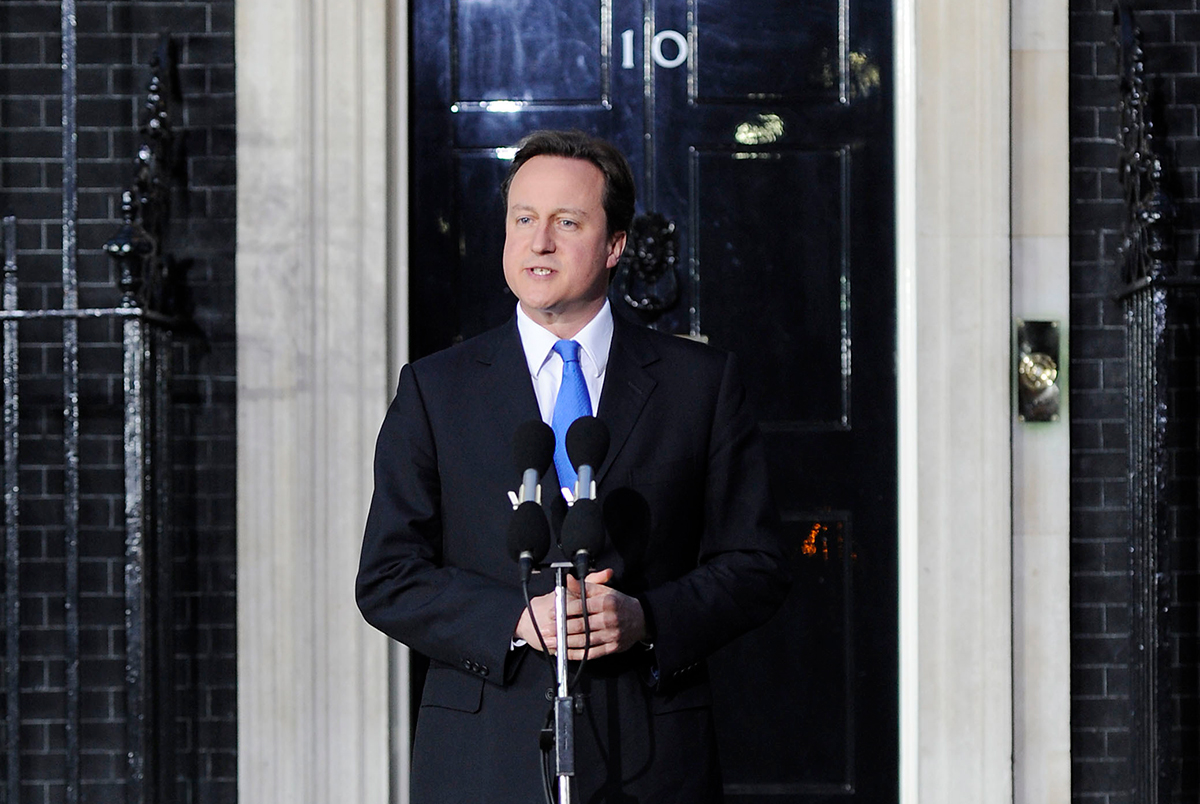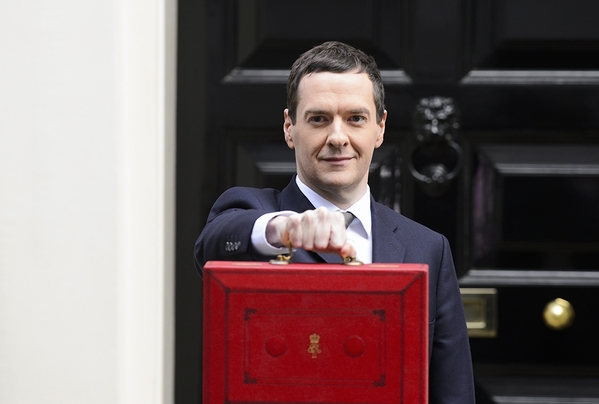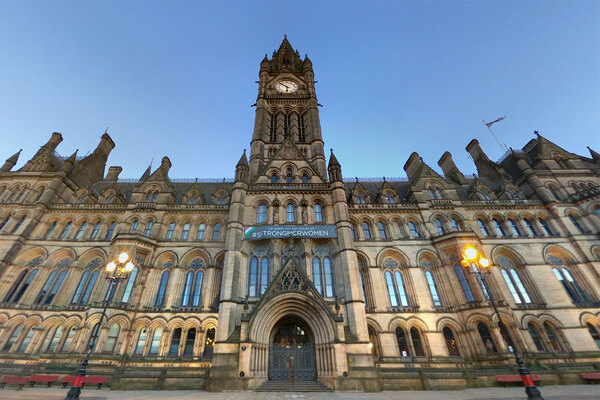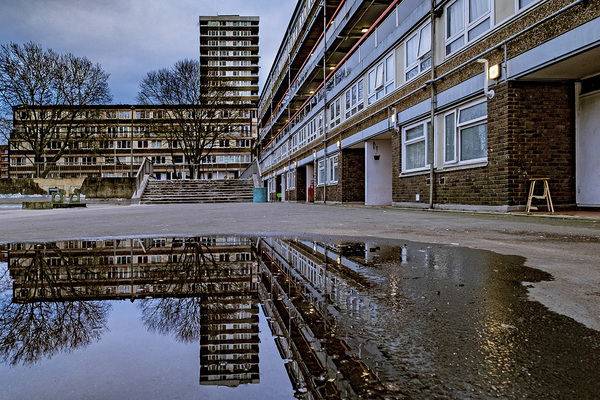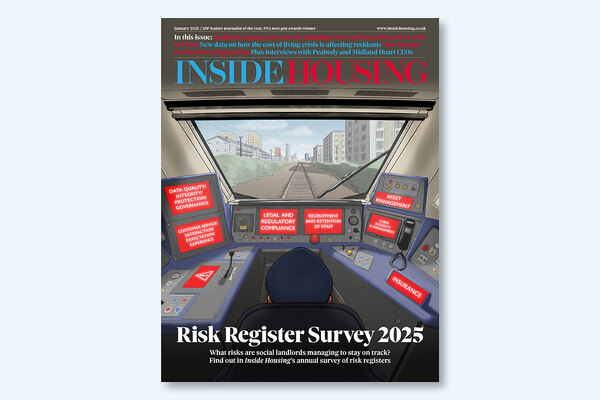You are viewing 1 of your 1 free articles
Universal Credit: how we got here
The first stage of Universal Credit was fully rolled out this week. To mark the milestone, Peter Apps looks back at the troubled reform’s history. Photography: Alamy and Getty
This week marks a major milestone in the history of the welfare state in this country.
On Wednesday the full service of Universal Credit was rolled out to the final 44 job centres still waiting for it. From now on, wherever you lodge a new claim for benefits in the UK, you will be signed up to a single monthly payment.
This was the dream of right-leaning thinktank the Centre for Social Justice (CSJ) in its 2009 report Dynamic Benefits: towards welfare that works. But the reality often looks like more of a nightmare. The past year has seen a wall of negative coverage about the impact of Universal Credit: soaring foodbank use, out-of-control rent arrears, evictions and homelessness.
This week, as the mammoth reform of the system rolls into its next phase, Inside Housing publishes several special articles looking at the detail of the controversial and divisive policy (see box below). Here, we look back at how it all began.
"The idea was that tapers were unfair and perverse –working more hours effectively cost you money in benefits, critics said"
While Universal Credit is typically traced to the 2009 CSJ report, the genesis of the idea is actually much older. In the late 1990s, with the advent of the tax credit system, the creation of a single unified benefit was floated as an idea.
The problem was what is known to benefit experts as ‘tapers’ – namely, the way benefit payments tail off as a claimant’s income rises.
With so many different benefits (the CSJ identified 51), the idea was that tapers were unfair and perverse –working more hours effectively cost you money in benefits, critics said.
The old system was also seen as inefficient and complex. It did not mirror work. The aim was nothing less than the end of poverty.
The report criticised policymakers for viewing poverty “through a financial lens only”.
Instead, wrote CSJ chair and former Conservative leader Iain Duncan Smith, policymakers needed to realise that “the choices you make have a significant bearing on whether you live in poverty”.
"The aim was nothing less than the end of poverty"
Less than a year after the report was published, the coalition government came to power and Mr Duncan Smith was named work and pensions secretary by the new prime minister David Cameron – with a mandate to put his theories to the test.
“The belief was that the solution to poverty was a purely technical one rather than about how much money you can actually get,” says Sam Lister, policy and practice officer and welfare reform expert at the Chartered Institute of Housing. “They completely oversold the advantages of it, and completely underplayed the disadvantages.”
It didn’t take long though for the wheels to begin turning on Universal Credit. It was announced in a consultation in the summer of 2010, adopted in the Spending Review in the autumn, placed into a bill in 2011 and passed onto the statute books in 2012.
But now came the difficult bit: implementing it. There is no understating how seismic a change this was. The government was, as Sue Ramsden, policy leader at the National Housing Federation, explains, taking direct control of housing benefit from local authorities for the first time since the 1980s.
It was also reliant on HM Revenue & Customs gathering live data on people’s earnings – something it did not yet have the capacity to do. Nonetheless, an ambitious timescale was agreed: the service would be fully rolled out by 2018.
“They got carried away,” says Mr Lister. “It came from their own rhetoric that ‘We are simplifying the benefit system’. They are in the sense that they are replacing six benefits with one – but that means you are creating one hell of a complicated benefit.”
As the timeline below demonstrates, the system hit problems quickly – it was only February 2013 when it had to be ‘reset’ due to difficulties with the IT system.
"They are in the sense that they are replacing six benefits with one – but that means you are creating one hell of a complicated benefit.”
For the remainder of the coalition government years it moved glacially – a ‘live service’, reliant on the postal service, the individual processing of claims and a much-maligned helpline to fix problems, focused only on the simplest cases such as new claimants and single, healthy job seekers.
The pace, however, has increased since the 2015 election.
The roll-out of the full service for new claimants and those whose circumstances change began in late-2015 and was completed this week. This brings far more claimants, including vulnerable people and families, into the scope of the new policy. By August 2018, a million households were claiming the benefit. This is up from 17,850 in July 2014.
Alongside this, in the summer Budget in 2015 George Osborne cut billions out of Universal Credit. Though some of these cuts have been undone by Theresa May’s government, the impact has been felt. Reports now mount of increased food bank use, growing rent arrears and destitution among claimants.
This week marks only the end of the first phase. The next is even more vexed – moving existing claimants into the new system in a process known as ‘managed migration’. This will begin in July and, under the current timetable, run until 2023. Some six million people need to be moved onto the new system in that time. Eight years on from its announcement, we remain at the tip of the iceberg.
“They got carried away,” says Mr Lister. “It came from their own rhetoric that ‘We are simplifying the benefit system’. They are in the sense that they are replacing six benefits with one – but that means you are creating one hell of a complicated benefit.”
As the timeline below demonstrates, the system hit problems quickly – it was only February 2013 when it had to be ‘reset’ due to difficulties with the IT system.
"They are in the sense that they are replacing six benefits with one – but that means you are creating one hell of a complicated benefit.”
For the remainder of the coalition government years it moved glacially – a ‘live service’, reliant on the postal service, the individual processing of claims and a much-maligned helpline to fix problems, focused only on the simplest cases such as new claimants and single, healthy job seekers.
The pace, however, has increased since the 2015 election.
The roll-out of the full service for new claimants and those whose circumstances change began in late-2015 and was completed this week. This brings far more claimants, including vulnerable people and families, into the scope of the new policy. By August 2018, a million households were claiming the benefit. This is up from 17,850 in July 2014.
Alongside this, in the summer Budget in 2015 George Osborne cut billions out of Universal Credit. Though some of these cuts have been undone by Theresa May’s government, the impact has been felt. Reports now mount of increased food bank use, growing rent arrears and destitution among claimants.
This week marks only the end of the first phase. The next is even more vexed – moving existing claimants into the new system in a process known as ‘managed migration’. This will begin in July and, under the current timetable, run until 2023. Some six million people need to be moved onto the new system in that time. Eight years on from its announcement, we remain at the tip of the iceberg.
Universal Credit timeline: how the policy developed
September 2009 – Centre-right thinktank the Centre for Social Justice, chaired by former Conservative leader Iain Duncan Smith, publishes Dynamic Benefits: towards welfare that works.
The report advocates simplifying the existing 51 potential benefits into two simple “universal credits”.
May 2010 – David Cameron becomes prime minister and Mr Duncan Smith is appointed work and pensions secretary.
July 2010 – The government publishes ‘21st Century Welfare’ – a consultation document that proposes ‘Universal Credit’, a system to “remove much of the complexity that burdens the system today” by rolling six payments into one. In October’s Spending Review the system is adopted.
February 2011 – The Welfare Reform Bill, which provides the legislative framework for the system, is introduced to parliament.
March 2012 – The bill passes into law as the Welfare Reform Act 2012. In July, small pilots are launched in six areas testing the ‘direct payment’ of housing benefit.
February 2013 – The Major Projects Authority, which oversees government projects, expresses serious concern about the policy. The Department for Work and Pensions (DWP) “resets” the programme. Early evidence from the pilots shows soaring rent arrears as a result of the direct payment of benefit.
April 2013 – Roll-out of a limited ‘live service’ begins in specific pilot areas, focusing at first only on single claimants with straightforward circumstances for claiming. The DWP plans a ‘test and learn’ approach which will see it use evidence from the early roll-out to inform its development of the ‘full’ service.
September 2013 – A damning National Audit Office (NAO) reportaccuses the DWP of “weak management, ineffective control and poor governance” in developing the new system.
June 2014 – The live service begins to roll out across North West England, beyond the pilot areas. By October, the service is rolled out to 17,850 claimants, with roll-out steadily continuing.
July 2015 – After securing a majority in the general election in May, Conservative chancellor George Osborne (pictured) announces £3.2bn of cuts to the service, including a controversial reduction in work allowances.
Sept 2015 – As fears over rent arrears mount, 33 social landlords test a ‘trusted partner pilot’ which allows them to recommend tenants be switch back to direct payment of rent to landlords.
November 2015 – The roll-out of the full service begins, with south London boroughs Southwark and Croydon the first to experience it.
March 2016 – The roll-out of the ‘live service’ to new single, healthy claimants completes across the UK, and the roll-out of the full service expands at pace. Mr Duncan Smith resigns citing “too much emphasis on money saving” in the welfare programme.
February 2017 – “Compelling evidence” of problems with the full roll-out leads to an inquiry from the Work and Pensions Committee led by Frank Field (pictured). In September, the committee calls for the roll-out to be paused, warning of a “human and political catastrophe”.
November 2017 – In the Budget, the government slows the roll-out, scraps the seven-day wait for new claims to be processed and makes other changes aimed at limiting negative impacts.
March 2018 – Full roll-out to all claimants is delayed until 2023.
June 2018 – Another damning NAO report slams the policy for failing to deliver the planned savings and exposing claimants to hardship.
Research from housing association trade bodies across the UK shows 73% of Universal Credit claimants are in arrears compared to 29% of all other tenants.
June 2018 - Inside Housing asks housing association sector leaders for their views on how the policy can be fixed:
Click here to read their suggestions
October 2018 – In his Budget speech, the chancellor increases work allowances. The Office for Budget Responsibility says Universal Credit will cost “billions” more than the legacy system.
December 2018 – Roll-out of the full service completes, going live in the final 44 Jobcentre areas in the UK.
More on Universal Credit
A rock and a hard place: the Universal Credit frontline Universal Credit was meant to simplify the welfare system and give people control over their finances. But in one London borough,Gavriel Hollander finds the reality is very different.
Universal Credit: how we got here Inside Housing's Pete Apps traces the history of the government's flagship welfare reform
Starting to bite: how Universal Credit is making people homeless For the first time, Inside Housing has uncovered figures which suggest Universal Credit is making people homeless
Universal Credit needs universal co-operation As cracks in the consensus that Universal Credit is beneficial to claimants appear, the Department for Work and Pensions must co-operate with all partners to ensure the policy is a success, writes Eamon McGoldrick
Ministers need to open their eyes to the impact of Universal Credit Inside Housing editor Emma Maier calls for ministers to take notice of the problems affecting the government's key welfare reform
Universal Credit problems are much wider than just administrative issues As the full Universal Credit service rolls out to all postcode areas, Sam Lister outlines ways the policy could be improved



